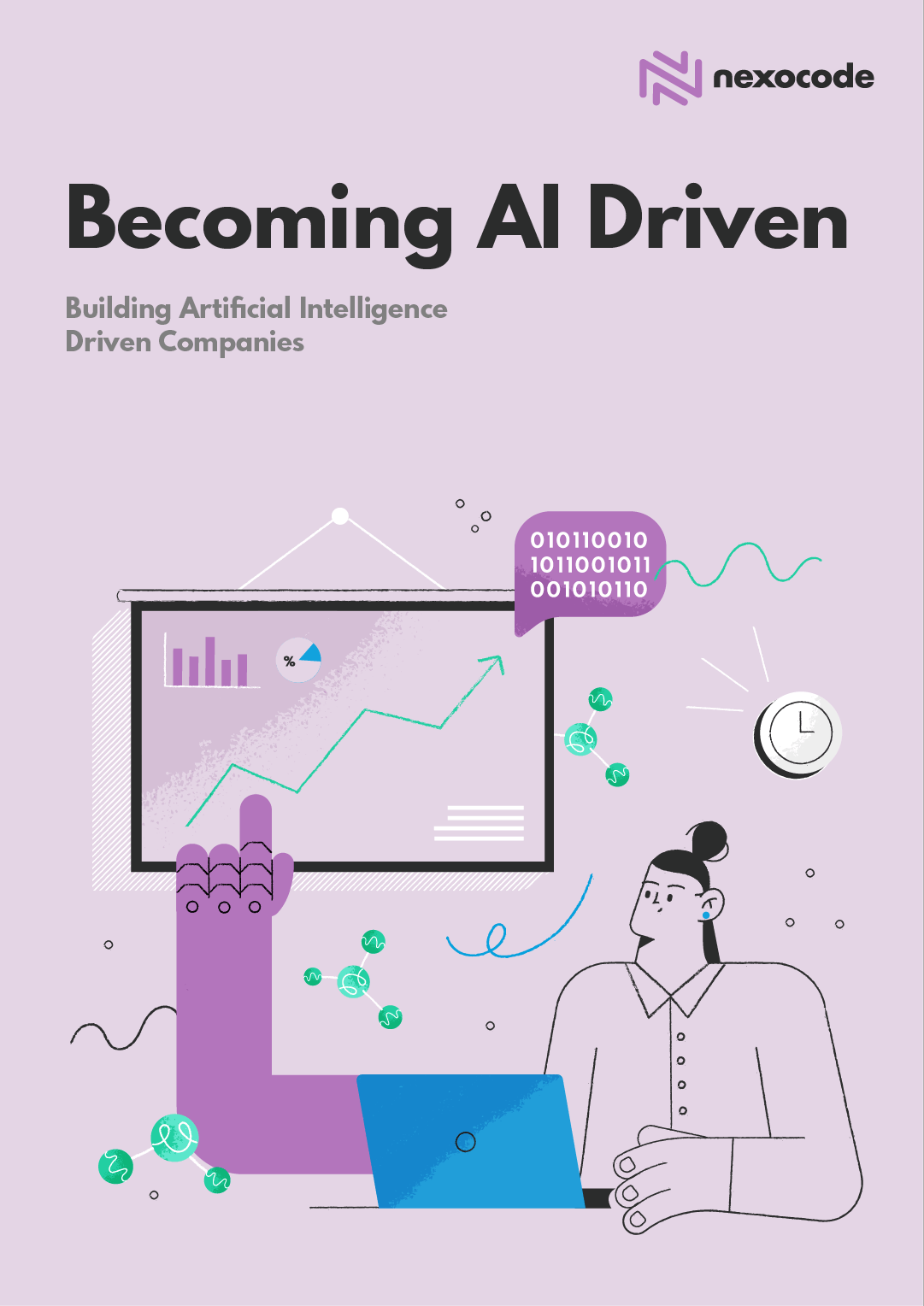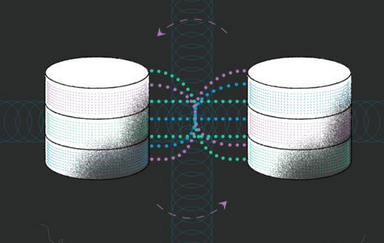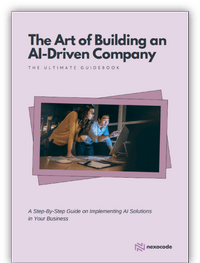Are you ready to transform your organization’s data landscape, but find yourself navigating the murky waters of stakeholder skepticism?
In an era where data is hailed as the new oil, harnessing its full potential requires not just advanced technology, but a shift in organizational culture and mindset. Enter Data Mesh—a paradigm shift in data architecture that promises to dismantle silos and democratize data across the enterprise. However, despite its transformative potential, Data Mesh can often seem like a daunting and nebulous concept to stakeholders accustomed to traditional data management systems.
Securing stakeholder buy-in is a critical hurdle that stands between the status quo and the innovative horizons of Data Mesh. It requires a compelling narrative that bridges the gap between technical excellence and strategic business value. This strategic guide aims to arm you with the insights and tools necessary to turn apprehension into advocacy, paving the way for a seamless transition to a Data Mesh implementation that aligns with your business objectives.
As you embark on this journey, remember that the goal is not just to introduce a new system, but to catalyze a movement within your organization—a movement that promises to revolutionize the way you capture, process, and leverage data to drive innovation and growth. Let’s explore how to build a case so persuasive that your stakeholders won’t just sign off on it—they’ll champion it.
TL;DR
• Data Mesh shifts the paradigm from centralized data lakes to a decentralized architecture, promoting scalability and agility in data management.
• By treating data as a product, organizations empower domain teams, ensuring data quality and governance from the source.
• Stakeholders may have concerns about moving away from traditional data architectures; addressing these requires clear communication of the data mesh benefits.
• The transition to data mesh can be smoothed with expert data mesh consulting, aligning the implementation with the company’s business strategy.
• Risks in data mesh adoption can be mitigated by a comprehensive plan that considers data security, financial planning, and infrastructure readiness.
• Success in data mesh is measurable through strategic KPIs, reflecting enhanced data access, data democratization, and overall data-driven decisions.
• For a concise roadmap and expert guidance through your data mesh journey,
contact nexocode—our AI experts bring extensive experience in data engineering to support and streamline your data mesh implementation.
The Value Proposition of Data Mesh Architecture
Redefining Data Management: The Data Mesh Advantage
In the burgeoning era of big data, the limitations of traditional data architectures have become increasingly apparent. Businesses now seek a paradigm shift to keep up with the explosive growth of data assets and the need for agile, reliable data management. Data Mesh emerges as a beacon of innovation, proposing a decentralized data architecture that reimagines the very fabric of data infrastructure.
Decentralized Ownership: Empowering Domain Teams
The cornerstone of Data Mesh is its emphasis on decentralized ownership. Unlike the traditional centralized data lake model where data assets are pooled into a massive, often unwieldy repository, Data Mesh empowers domain teams with the autonomy to manage and govern their own data. This shift not only enhances data quality by placing responsibility closer to the data source but also accelerates decision-making, allowing business users to access and analyze data without the bottlenecks of central data teams.
From Data Lakes to Data Products: A Consumer-Centric Approach
Moving beyond the confines of data lakes and warehouses, Data Mesh champions the concept of ‘data products’. Each data product is a curated, high-quality dataset, tailored to meet the needs of data consumers with precision. By treating data as a product, data engineers and data product owners are incentivized to ensure their offerings are reliable, well-documented, and user-friendly, promoting a culture of excellence across the data ecosystem.
Enhanced Data Governance: The Fusion of Structure and Flexibility
Data governance within a Data Mesh model is not an afterthought but a fundamental principle. By integrating governance at the data domain level, domain teams can implement nuanced policies that reflect the unique requirements of their data, while still adhering to the broader governance framework. This federated governance model harmonizes structure and flexibility, leading to a more resilient and responsive data strategy.
A pivotal feature of the Data Mesh architecture is the self-serve data platform. It dismantles the data silos of yesteryears and introduces a democratized approach, enabling business users and data scientists alike to self-service their data needs. This infrastructure supports a broad spectrum of data operations, from raw data ingestion to advanced analytical data pipelines, all while ensuring that high-quality data is readily available for those who need it.
Catalyzing a Data-Driven Culture
Data Mesh doesn’t just alter how we store and manage data; it revolutionizes how we perceive it. It lays the groundwork for a truly data-driven culture where data is not just an asset but a critical component of every business operation. Successful Data Mesh implementation aligns with the organization’s data strategy, ensuring that every team, from data producers to data consumers, is united in the mission to derive meaningful insights and make data-driven decisions.
Navigating the Data Mesh Journey: Your Path to Success
Embracing the Data Mesh paradigm is not without its challenges, yet the potential rewards are significant. A successful data mesh implementation can lead to a more agile, resilient, and future-proof data management paradigm, setting the stage for sustained growth and innovation. As you consider transitioning to a Data Mesh architecture, seek out expert guidance to tailor the approach to your organization’s unique context and embark on a journey to redefine your data strategy for the digital age.
Understanding Stakeholder Concerns Towards Data Mesh Implementation
Embracing Decentralization: A Leap of Faith or a Step Forward?
“Do we really need to move away from our centralized data platforms?”
For stakeholders accustomed to traditional data architectures, the transition to a data mesh can seem daunting. They may question the necessity of moving away from a centralized data platform that has been the backbone of their operations. Understanding their hesitation involves highlighting how a decentralized data architecture can address the limitations of existing systems, particularly in terms of scalability, data quality, and agility.
Empowering Data Teams: Evolution or Revolution?
“How will Data Mesh affect our Data Engineers and Data Scientists?”
There’s a genuine concern about how the new data mesh paradigm will impact the roles of data engineers and data scientists. Will it complicate their workflows, or will it truly democratize data access and empower them to create high-quality data products more efficiently? Stakeholders need assurance that the data mesh model will enhance, rather than hinder, the productivity of these crucial team members.
Upholding Data Excellence: Distributed Control or Chaos?
“Can we guarantee data quality and data governance in a decentralized architecture?”
Ensuring data quality and governance is a top priority for any organization. Stakeholders often worry whether a decentralized approach like data mesh can maintain high-quality data standards and robust governance protocols. It’s important to communicate that with data mesh, data governance and quality checks are built into the system at the domain level, often resulting in more rigorous and tailored governance that aligns with the specific needs of each domain.
“Is our data infrastructure ready for such a fundamental change?”
Adapting to a data mesh infrastructure might require significant changes in the existing data management setup. Stakeholders will be concerned about the readiness of their current infrastructure to support a distributed data architecture. They may question the need for investing in new tools and technologies, or wonder if their existing data lakes can be integrated into the new system.
Risk Assessment: Identifying and Addressing Challenges
“What are the risks and how do we mitigate them?”
Every new implementation comes with its set of risks. Stakeholders will want to know what potential risks a data mesh implementation carries and how they can be mitigated. This includes concerns about the disruption of ongoing operations, the learning curve for domain teams, and the possibility of increased complexity in managing data across multiple decentralized data repositories.
Financial Considerations: Investing in the Future of Data
“What about budgeting and financial planning for data mesh transformation?”
A major concern for stakeholders is often the financial aspect of transitioning to a data mesh architecture. They’ll want to know the cost implications, how it fits into the current budget, and what the long-term financial benefits are. Crafting a clear budgeting and financial plan that outlines initial investments, ongoing costs, and anticipated ROI is essential to address these concerns.
Data Security: A Top Priority
“Will our customer data remain secure?”
In an era where customer data security is paramount, questions about the security implications of a distributed system are inevitable. Stakeholders need to understand how customer data will be protected across multiple domains and how data access will be controlled to prevent unauthorized use.
Domain Data Management: Coherence in Diversity
“How will we manage data across multiple domains?”
The task of managing domain data within a data mesh framework can seem overwhelming. Stakeholders might be skeptical about the level of coordination required between domain teams and how data assets will be tracked, accessed, and analyzed across the organization. They’ll need clarity on the strategies for maintaining consistency and coherence in managing data across domains.
Investment in Growth: Building Data Mesh Expertise
“Are we ready to invest in training and skill development?”
Implementing a data mesh requires stakeholders to consider the investment in training and developing the necessary skills within their teams. They may hesitate, wondering if the investment in upskilling for domain-driven data ownership, treating data as a product, and mastering new tools for data mesh will yield a worthwhile return.
Consumer-Centric Data Access: Ensuring a Seamless Experience
“Can we ensure seamless data consumer experiences?”
A key concern will be whether the data mesh can provide data consumers with a seamless experience. Stakeholders will want to know how self-service data platforms and other elements of the data fabric will facilitate easy and efficient access to the data needed to drive business decisions and customer insights.
Success Metrics: Evaluating the Data Mesh Journey
“How do we measure the success of a Data Mesh implementation?”
Finally, stakeholders will seek to understand the metrics for data mesh success. How will the implementation be measured, what is the ROI of the data mesh approach, and what are the KPIs that will indicate whether the new data management paradigm is delivering on its promises? Clear communication on the expected outcomes, performance indicators, and success stories will be critical in securing stakeholder buy-in for a data mesh strategy.
Building the Case for Data Mesh
Crafting a Compelling Narrative
To gain stakeholder buy-in for a data mesh, it’s crucial to articulate a compelling narrative that resonates with the strategic goals of the organization. This narrative should include:
- Illustrating the Limitations of Current Systems: Demonstrate how centralized data architectures impede growth, flexibility, and innovation.
- Highlighting the Benefits: Detail how data mesh can drive efficiency, improve data quality, and accelerate data-driven decisions across the enterprise.
- Envisioning the Future State: Paint a picture of a future where domain teams are empowered, data silos are eliminated, and the organization thrives on data democratization.
- Presenting a Roadmap: Outline a clear, step-by-step plan that takes the organization from its current state to the desired data mesh architecture, highlighting milestones and key deliverables.
Quantifying the Value Proposition
Translate the benefits of data mesh into quantifiable metrics, such as anticipated cost savings from decommissioned legacy systems, increased revenue from faster insights, and reduced risk through better data governance. Include case studies or examples from other organizations that have successfully implemented a data mesh to add weight to the proposition.
Aligning with Business Objectives
Ensure that the case for data mesh aligns with the broader business objectives and addresses specific pain points or opportunities identified by stakeholders. This might include enhancing customer experiences through better data access or gaining a competitive edge by leveraging advanced analytics.
Communication Strategies for Stakeholders
Tailoring the Message
To secure data mesh stakeholder buy-in, it’s essential to tailor the message to address the unique concerns and priorities of each stakeholder group. Understand that data consumers, data producers, data engineers, and business users will all have different perspectives on the data mesh implementation. Their concerns may range from data quality and data access to the impact on existing data silos and centralized data architectures.
Clear and Consistent Messaging
Maintain clear and consistent messaging about the data mesh approach, ensuring stakeholders understand how decentralized data architecture can enhance the organization’s data management paradigm. Use real-life examples to demonstrate how data mesh has successfully streamlined data governance, improved data quality, and driven better data-driven decisions.
Fostering Open Dialogue
Encourage open dialogue by organizing dedicated sessions where stakeholders can voice their concerns, ask questions, and get clarity on how data mesh transforms the data platform from a central data lake to a self-serve data infrastructure. Emphasize the role of data product owners and domain teams in managing their domain data, thus promoting data democratization.
Utilizing Visual Aids
Visual aids can be particularly effective in communicating complex concepts like data mesh architectures. Diagrams that illustrate the flow of data assets through multiple decentralized data repositories or the structure of the data fabric can help stakeholders visualize data in the new paradigm.
Highlighting the Shift from Data Ownership to Stewardship
Communicate the shift from centralized data ownership to a more collaborative stewardship model, where data domains are curated by domain teams, ensuring that data assets are treated as products that deliver high-quality data to data consumers.
Showcasing Success Metrics
Share key success metrics that demonstrate the impact of data mesh on the organization, such as improvements in data quality, reductions in data management overhead, and enhanced self-service access to data.
Remember, the key to effective communication is to inform, engage, and persuade. By addressing stakeholder concerns and demonstrating the tangible benefits of the data mesh model, you can pave the way for a smoother transition to this innovative data management paradigm.
Showcasing Success Stories and Data Mesh Case Studies
When advocating for data mesh, it’s compelling to showcase success stories from industry pioneers. Companies like PayPal, Intuit, Delivery Hero, and Zalando have not only embraced data mesh architecture but have also reaped significant benefits from its implementation.
PayPal’s journey to a data mesh model exemplifies how large-scale financial services can dismantle data silos, enabling data engineers and data scientists to access and analyze data more efficiently. Their shift towards domain-oriented data ownership has streamlined their data pipeline, enhancing the quality and data governance across the board.
Intuit’s Data Democratization
Intuit has leveraged data mesh to democratize data access among its business users and data consumers, allowing for more data-driven decisions. Their case study illustrates the transition from centralized data management to a self-serve data platform, which has significantly boosted the productivity of their data teams.
Delivery Hero’s Scalability Success
Delivery Hero’s adoption of data mesh shows how data mesh implementation can support rapid scalability and global expansion. By treating data as a product, they have managed to maintain high-quality data across multiple data domains, while fostering a culture that encourages data ownership among domain teams.
Zalando’s Fashionable Data Strategy
Zalando’s approach to data mesh stands out in retail by demonstrating how a decentralized data architecture can enhance operational efficiency. Their success story can inspire stakeholders about the potential of data mesh to manage customer data and domain data effectively, even in a fast-paced, consumer-driven industry.
By presenting these and similar case studies and encouraging interactive exploration, you can bolster the credibility of data mesh as a viable and beneficial data management paradigm for your organization. If you’re working with external partners, your data strategy consulting company should also be able to support you in showcasing nicely detailed case studies of data mesh implementations.
10 Tips for Securing Data Mesh Stakeholder Buy-In
Drawing from nexocode’s extensive expertise as a data architecture consulting company, we’ve crafted a set of strategic tips that have proven effective in securing stakeholder buy-in for Data Mesh initiatives. These insights are distilled from our hands-on experience guiding clients through the transformative journey of Data Mesh implementation.
- Articulate a Clear Vision: Begin with a compelling narrative outlining your data-driven organization’s future state and how Data Mesh will serve as the backbone for this transformation.
- Demonstrate Business Alignment: Show how Data Mesh aligns with broader business goals, emphasizing its role in driving revenue, enhancing customer experience, or streamlining operations.
- Address Pain Points: Identify and speak directly to stakeholders’ current data management challenges and illustrate how Data Mesh offers a tangible solution.
- Emphasize Data Ownership: Stress the empowerment of domain-driven data ownership, which can motivate teams by giving them greater control and responsibility over their data.
- Forecast ROI: Provide conservative yet promising estimates of the return on investment that Data Mesh can deliver, focusing on cost savings, efficiency gains, and potential revenue growth.
- Highlight Competitive Advantage: Cite market trends and case studies where early adopters of Data Mesh have gained a competitive edge.
- Propose a Pilot Project or MVP Implementation for Key Data Products: Suggest starting with a small-scale implementation to demonstrate the feasibility and benefits of Data Mesh without overwhelming stakeholders with a significant commitment (pick an easy-to-address yet beneficial data domain that has a nice, neat use case).
- Showcase Technological Advancements: Discuss the innovative features of modern Data Mesh architectures, such as improved data quality, real-time analytics capabilities, and advanced data governance.
- Prepare a Roadmap: Offer a clear, phased roadmap outlining the journey toward Data Mesh, detailing each step and its aims.
- Commit to Continuous Learning: Ensure stakeholders that ongoing learning and adaptation are integral to the Data Mesh strategy, which includes regular workshops, training sessions, and a feedback loop for continuous improvement.
Aligning Data Mesh Goals with Business Strategy
In the quest to secure stakeholder buy-in, aligning the objectives of Data Mesh with the overarching business strategy is pivotal. This convergence ensures that Data Mesh is not viewed as just an IT initiative but as a fundamental business transformation that fuels strategic goals. Data Mesh should be positioned as the catalyst for achieving key business outcomes—whether it’s accelerating digital transformation, enhancing customer personalization, or driving innovation. By illustrating the direct impact on revenue growth, cost optimization, and market competitiveness, stakeholders can visualize the tangible benefits of adopting Data Mesh.
Moreover, it is crucial to communicate how Data Mesh principles, such as domain-oriented decentralized control and self-service data infrastructure, can directly address current business challenges and unlock new opportunities. For instance, domain data ownership aligns with business units’ accountability, thereby improving data quality and speed of insights. Self-service capabilities empower business users to access and analyze data independently, fostering
data-driven decision-making across the organization. By presenting Data Mesh as a strategic enabler that resonates with business priorities, stakeholders are more likely to endorse and champion the shift towards a more agile and resilient data architecture.
Risk Management and Mitigation
Effective risk management is essential to secure stakeholder buy-in for Data Mesh. Here’s a concise strategy based on our experience for identifying and mitigating potential risks:
- Early Identification: Proactively identify risks by engaging with cross-functional teams to understand potential technical and organizational hurdles.
- Impact Analysis: Assess the potential impact of identified risks on the Data Mesh implementation and the broader organization.
- Risk Prioritization: Rank risks based on their likelihood and impact to focus on the most critical issues first.
- Mitigation Planning: Develop clear mitigation strategies for high-priority risks, outlining specific actions, responsible parties, and timelines.
- Communication: Keep stakeholders informed about potential risks and the steps being taken to address them, fostering transparency and trust.
- Monitoring: Establish ongoing monitoring to detect new risks early and adjust mitigation strategies as needed.
- Review and Learn: Regularly review the effectiveness of risk management efforts and incorporate lessons learned into future planning.
Measuring Success of Data Mesh Implementation and Communicating Progress
In the journey to data mesh implementation, establishing and communicating clear success metrics is paramount to maintain stakeholder trust and demonstrate the architecture’s impact. Key performance indicators such as enhancements in data quality, marked by improved accuracy and reliability of information, and operational efficiency, evidenced by reduced time-to-insight and smoother data operations, are essential gauges of success. Another vital metric is the degree of user empowerment, which can be quantified by the uptick in self-service data operations, signifying an effective democratization of data.
The progress towards these goals should be shared with stakeholders through regular, transparent updates that not only report on the metrics but also highlight real-world success stories. This approach ensures that the benefits of the data mesh are not just conceptual but tangible and understood across the organization. Interactive dashboards can serve as powerful tools in this communication strategy, offering a real-time visualization of progress and allowing stakeholders to see the direct correlation between the data mesh implementation and business outcomes.
Furthermore, establishing feedback loops is critical for a two-way communication channel where stakeholder feedback is actively solicited and addressed. This ensures that any concerns are promptly managed and that the stakeholder inputs are factored into the ongoing development of the data mesh, fostering a collaborative atmosphere and shared ownership of the data mesh’s success. Through these strategic measures, the organization can not only track but also celebrate each milestone achieved on the path to a robust and effective data mesh infrastructure.
Ready to Reap the Benefits of Data Mesh? Reach out to nexocode Data Experts
As the data landscape evolves, adopting a data mesh architecture could be the transformative step your organization needs to harness the true power of your data assets. If you’re ready to break down silos, cultivate a culture of data democratization, and pave the way for innovation, nexocode’s team of data experts is here to guide you through every phase of your data mesh journey.
Our seasoned data engineers and consultants specialize in crafting bespoke data mesh solutions that align seamlessly with your business objectives. We understand the intricacies of data mesh implementation, from the initial groundwork to the intricate weaving of a self-serve data platform that empowers your teams to access, manage, and utilize data with unparalleled autonomy and efficiency.
Leap towards a future where your data works for you, not against you. Connect with nexocode’s data experts today to explore how we can unlock the potential of advanced data infrastructure for your organization. Let’s build a data-driven culture together, where every insight leads to action, and every data point propels you closer to your goals.
🔗
Contact nexocode Data Experts
Don’t let your data aspirations be just a dream. Reach out now and let us help you turn them into your operational reality.









